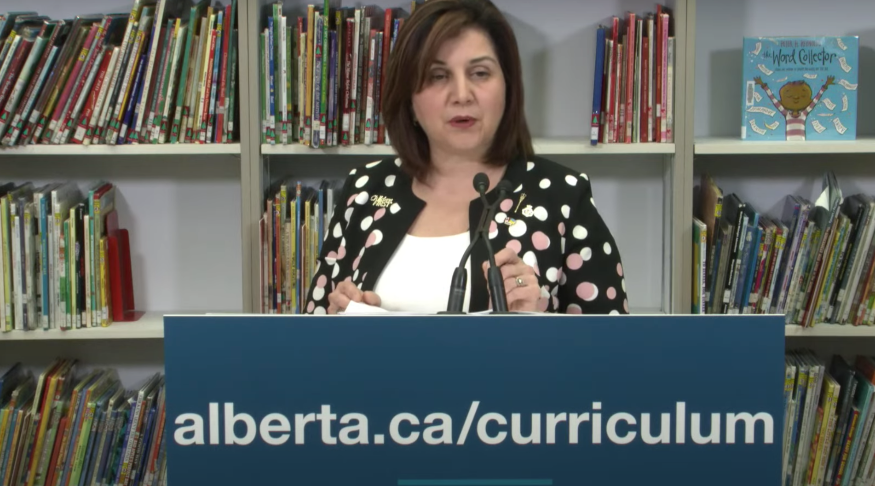Three subjects from the new K-6 curriculum will be implemented in classrooms this September.
In March, the provincial government announced all K-3 students will learn the new Mathematics and English Language Arts and Literature curriculums, while all K-6 students will learn from the new Physical Education and Wellness curriculum this upcoming school year.
“These three subjects in Alberta’s new K-6 curriculum are critical starting points that will set students on the best path for success. We heard what Albertans and education system partners told us and, with their insight, we updated Mathematics and English Language Arts and Literature to make sure our youngest students have the literacy and numeracy skills essential for the early years of learning. The Physical Education and Wellness curriculum fulfils our platform commitments of ensuring all elementary school students learn the importance of obtaining and providing consent as well as fundamental financial literacy skills,” Minister of Education Adriana LaGrange said in a media release.
From feedback gathered from classroom piloting and engagement activities, the updated curriculums will continue to align with top-performing jurisdictions, the release said.
Changes across the three K-6 subjects included updates to address concerns with content load, age appropriateness, wording clarity and First Nations, Métis and Inuit content.
The English Language Arts and Literature content updates include strengthened content related to creative and critical thinking and digital literacy.
“Pandemic-related learning disruptions make it more important than ever to focus on foundational reading, writing and speaking skills for early learners,” the release said.
Mathematics was updated to address fractions, measurement, operations, and percentages so students develop number sense.
Updates to the Physical Education and Wellness content include mental health, nutrition, safety, physical fitness, foundations and confidence.
The Alberta Teachers Association (ATA) is calling for full transparency on the curriculum revision.
“Teachers don’t trust this minister to take their concerns seriously. This government has a steady track record of putting in their earplugs and dismissing the legitimate concerns of teachers,” ATA President Jason Schilling said.
Adding, “We know that hundreds of teachers, academics, parents and others have criticized the content and direction of the previous draft directly to the Minister and through the very limited dialogue she has permitted to takeplace. But Albertans don’t know if today’s version of the curriculum incorporates that feedback or, instead, continues to reflect the political and ideological interference that has plagued this process so far.”
The ATA are working to hear from teachers about the curriculum content of the latest draft and are opening an online feedback portal where teachers can comment.
Teacher leaders from nine of the ATA’s subject area specialist councils will meet to more fully discuss the content of the curriculum and the road ahead related to implementation in May.
In previous ATA surveys and engagements, the association heard that the draft curriculum was not suitable to use in classrooms.
“93 per cent of teachers were unhappy with the draft and 94 per cent of school leaders were uncomfortable with it being implemented in their schools,” Schilling said. “We will have to hear now from teachers on whether today’s version alleviates their concerns, but if past practice and attitudes from government prevail, then I’m not optimistic.”
Schilling expressed that teachers are not prepared for the implementation in the upcoming school year, and with the school year coming to a close, there isn’t enough time to prepare to successfully plan instruction in multiple subjects by September.
In 2022-23, $59 million is being invested in teacher professional learning, and learning and teaching resources to ensure teachers are ready for the updated curriculum. The funding is part of the $191 million investment over three years to support the curriculum implementation across the province.
The province is providing teachers with the final curriculum, a Provincial Resource Review Guide, digital resources including videos and support documents, bridging resources to help with transitioning to the new curriculum, planning tools, and sample lesson plans.
The new curriculum will be implemented in three phases, with Phase 1 beginning in the 2022-23 school year, and by the next year, it is anticipated that all K-6 grades and subjects will be implemented.
About 400,000 students will be impacted by the new curriculum next school year.









